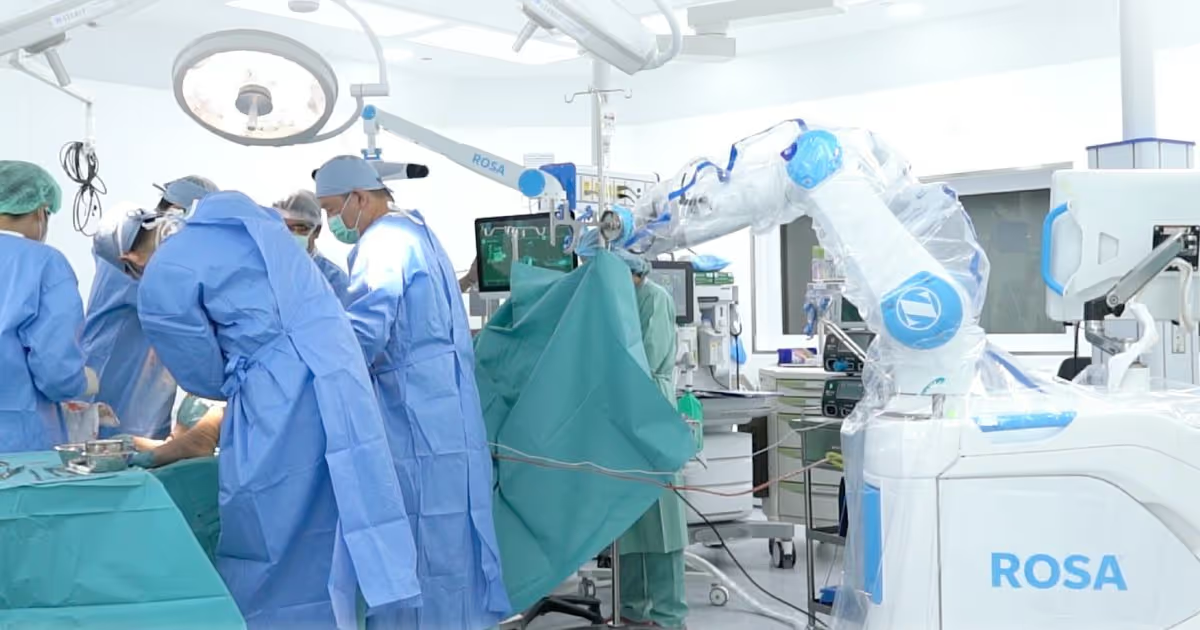ROSA, Robotic-assisted total knee replacement. Fad or Futuristic
It is commonly acknowledged that knee replacement surgery is a phenomenally successful surgery. However, despite this, 10-20 percent of patients are not completely satisfied with the result of their surgeries. Why is this, you may ask?
Studies indicate that this is due to:
- The functional outcome does not fully meet the patient's needs.
- Knee prosthetic implant is not optimally positioned.
To address the first problem, doctors and patients need to have clear, candid discussions to ensure that patient expectations align with the predicted possible results of the procedure.
As for the second problem, it is practically impossible to eliminate completely; no matter how many operative experiences a surgeon may possess, there is always a chance that errors can crop up during a traditional knee replacement surgery.
Therefore, technological aid is essential to enable the surgeon to reach this goal to ensure every procedure achieves the best possible outcomes. Furthermore, the technology should help make every surgical step go precisely as the surgeon planned to decrease the incongruity from intended lines and angles associated with bone cuts, prosthesis position and alignment.
Currently, the best technology for knee replacement surgery is a dedicated robotic-assisted knee surgery system. The robotic system software converts a series of X-rays images into a three-dimensional (3D) reconstruction of your knee joint. The surgeons use this model to lay out the flawless bone cut, implant positioning, limb alignment, and optimal tensioning of the knee ligaments based on the patient’s personalized and unique anatomy. These parameters are then programmed into the robotic system before the actual surgery takes place.
After the planning phase is complete, the surgeon will start the operation, with the robot guiding the surgeon to remove bone and create the right amount of space needed for knee prosthetics. The system utilizes optical trackers to locate the real-time position of the knee in 3-D space. If the knee moves even slightly, the robot can adjust accordingly to ensure that the preoperative plan is executed as intended. The robot will also ensure that the tension on the ligaments is appropriate throughout the surgery.
Moreover, robotic-assisted knee replacement surgery allows the surgeon to make a much smaller incision than usual. A large incision required in traditional knee replacement surgery is no longer needed to visualize bone “reference landmarks.”
In addition, having a robot assist the surgeon allows for more precise cutting and removal of the bones, reducing the risk of damage to surrounding ligaments and muscles.
Another benefit of robotic-assisted knee replacement surgery is that surgeons do not have to drill into the lower end of the thigh bone to find an appropriate place to put and correctly align the prosthetic. Drilling into the thigh bone, as done in a traditional knee replacement surgery, is usually one factor that leads to excessive bleeding.
On top of all the enumerated benefits (smaller incision size, less soft tissue damage, and bleeding), robotic knee replacement surgery dramatically reduces postoperative pain, one of the main bothersome issues endured by patients.
Reduced pain enables faster recovery from a robotic-assisted knee replacement surgery; patients generally can walk within 24 hours while requiring minimal painkillers.
Despite all the benefits, a few obstacles still limit the adoption of robotic-assisted knee surgery.
Some of these limiting factors are:
- Higher cost compared to traditional knee replacement surgery
- A limited number of surgeons who are trained to perform robotic-assisted surgery
In the future, when more surgeons are trained in robotic-assisted surgery and the system becomes more widely available, the procedure's price will decrease and be attainable by more people. This is the future we sure are looking forward to.



